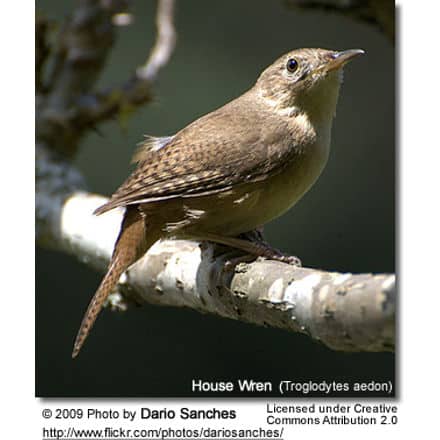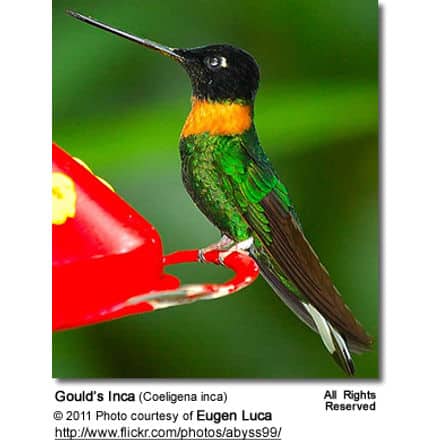House Wrens
House Wrens
Wrens
The House Wrens (Troglodytes aedon) is a small songbird of Wrenthe the family.
Distribution / Habitat:
Their breeding habitat is semi-open areas from Canada to southernmost South America. The tropical forms from southern Mexico southwards are sometimes considered a separate species, the Southern House Wrens, Troglodytes musculus. North American birds migrate to the southern United States and Mexico. The House Wren may have been displaced somewhat in some northern parts of its range by the introduction of the House Sparrow but is still common and widespread throughout most of the two continents.
Nesting:
This bird builds its large cup nest in various sorts of cavities, either natural or man-made, often using birdhouses where they are available, and sometimes choosing unusual sites such as old shoes. The female incubates the clutch of three to six red-blotched cream-white eggs for 14-15 days, and the naked young take another 16-19 days to fledge. House Wrens are known to destroy the eggs of other birds nesting near their territory.
Description:
Adults are 11.5 cm long and weigh 12 g. They have brown or grey-brown upperparts with pale grey underparts; there are black bars on the flanks, wings, and tail. They have an eye ring, a faint line over the eye, a short thin bill, and pink legs. There are regional variations in the appearance of this bird. The subspecies found on Tobago, T. a. tobagensis is larger and has much paler underparts than the mainland forms.
Identification Tips:
- Length: 4.25 inches
- Short, thin bill Indistinct supercilium (line above eye)
- Eye ring Gray-brown upperparts (browner in eastern United States birds)
- Pale gray underparts with dark barring on belly and under tail coverts
- Wings and tail barred with black
- Tail frequently held upright
- Pink legs
- Sexes similar
Similar species:
Other wrens with indistinct supercilium (line above the eye)s are Winter, Sedge, and Rock Wrens. Winter Wren is more reddish-brown above, darker below, and has a shorter tail. Sedge Wren is buffier on the breast and is streaked with white on the crown and back. Rock Wren is larger with a contrast between the gray back and brown rump and has buffy tips to the tail.
Diet:
These birds forage actively in vegetation. They mainly eat insects, spiders, and snails.
Song / Call:
This bird’s rich bubbly song is commonly heard during the nesting season but not at all afterward.
Copyright: Wikipedia. This article is licensed under the GNU Free Documentation License. It uses material from Wikipedia.org… USGS / Ref.: Length and wingspan from Robbins, C.S., Bruun, B., Zim, H.S., (1966). Birds of North America. New York: Western Publishing Company, Inc.)
Please Note: The articles or images on this page are the sole property of the authors or photographers. Please contact them directly with respect to any copyright or licensing questions. Thank you.
The Avianweb strives to maintain accurate and up-to-date information; however, mistakes do happen. If you would like to correct or update any of the information, please send us an e-mail. THANK YOU!






